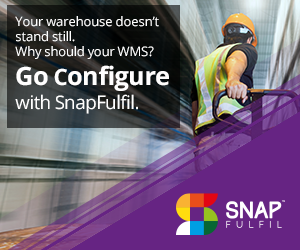Time to make a stand... and deliver!
Fulfillment businesses need to be able to pivot now more than ever and to be the person charged with making that happen does indeed bear a heavy responsibility.
It takes brave decisions and investment choices in terms of which software provider(s) to go with – and also which to ditch – but having previously been in that position I do understand the pressure.
Before joining SnapFulfil in 2013, I enjoyed senior IT roles within e-commerce retailers, eBuyer and Play.com, designing and implementing systems which helped take both companies from start-ups to market leaders. Even then I could see it would be a boom area.
Consequently, those formative years as an end-user have given me a unique insight into clients’ needs and how our agile and configurable cloud solution can help them adapt. But others must also step up to the plate and make those brave decisions now to reap the rewards later.
Our whole ethos is based around empowering users to configure their system in line with evolving demands. The sudden acceleration in the shift from bricks and mortar retail to online has caught many businesses off guard. Starting up in e-commerce, particularly when your primary route to market for years has been through stores, is not an easy process.

During Covid-19 a lot of B2B has switched to B2C, and our product is specifically B2C engineered. Consequently, e-commerce has been an early adopter of our WMS technology and we’ve also kept in front through using technologically advanced cloud infrastructure.
However, in e-commerce downtime of 10 minutes can mean missing delivery slots for clients. There is no point in being quicker and having speed of delivery if you are sending the wrong product to the wrong person. It’s about delivering accuracy too and robust and flexible WMS tends to do well in a recession because people want to save money and eliminate system errors. Business makes profit by keeping the cost low and e-commerce is all about being more efficient.
So, with warehousing cost control set to be a continuing key trend in a systematically tough economy, I’m confident that with flexibility and value built in we’re well-placed to help logistics operations achieve their goals.
Unfortunately, our industry is still hampered by IT service providers slow to adapt and change when businesses desperately need more nimble and responsive solutions.
However, the minimal upfront costs and support expenses of cloud-based WMS comes out way ahead of hard-coded and inflexible, legacy alternatives, where the majority of revenues is generated through bespoke modification costs and fees.
Cloud-based software gets implemented faster, even remotely, for little to no downtime, and upgrading to the latest version is automatic. With ‘servicing’ a cloud WMS not applicable either, IT costs are drastically reduced too and this balancing of short and long-term expenses especially works for high-growth e-commerce businesses that can't afford, or pivot with, a fussy and rigid on-premise solution.
In these times where uncertainty is the only certainty, the need for integrated, seamless technology solutions that work harder and smarter is a must when it comes to business supply chain and operations.
Fortune favors the brave and the challenge now is to have the courage and conviction to invest in software that is fit for purpose, scalable and can meet both the ongoing and future demands of your growing business.



